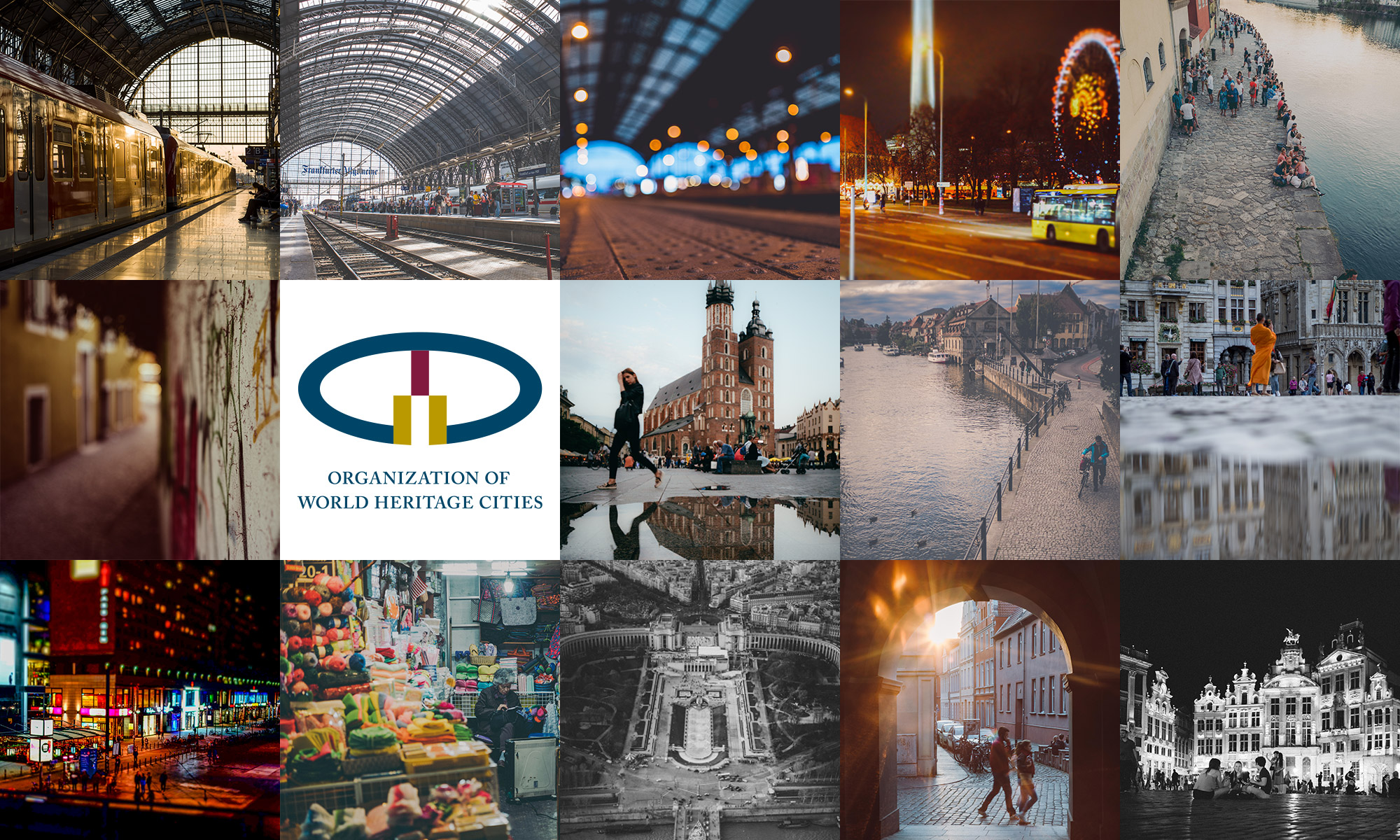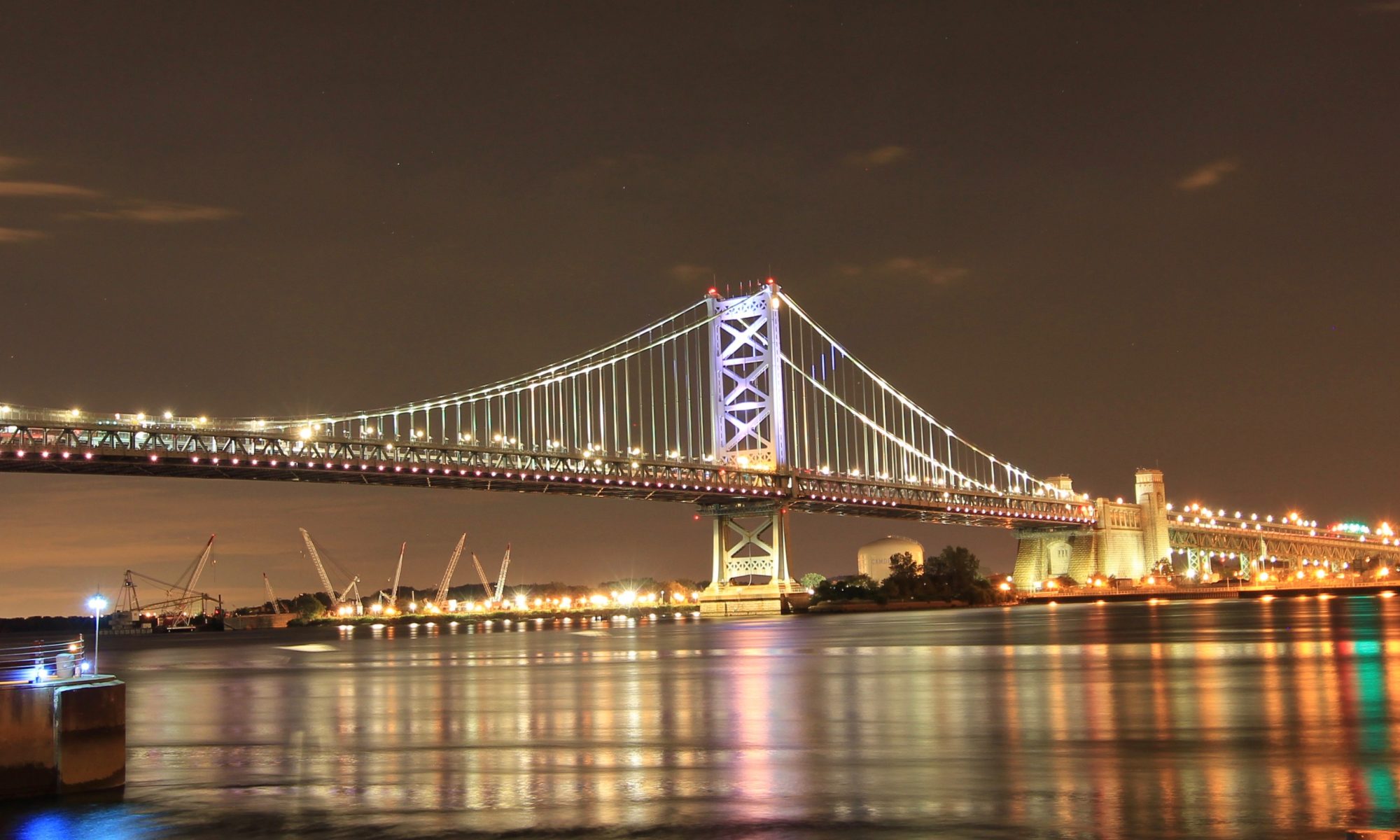Days 14-15: America’s First Capital
Connecting Heritage
These last few days were ones of many firsts. America’s first Zoo, America’s first paper mill, America’s first Continental Congress (!). I had the pleasure of teaming up with Global Philadelphia Association, a non-profit that sits in the heart of Center City, Philadelphia whose Mission is to promote Global interaction and enhance the regions global profile.
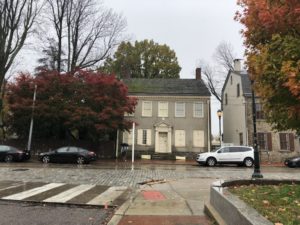
The first stop on my whirlwind tour in Philadelphia was to Georgetown which is an area located in Philly’s Northwest Region. Georgetown was considered the suburbs because it was an area outside of Philly when the city was first established. Today, Georgetown connects the City’s Northern boundary to it’s Western and is home to over 30 national historic landmarks including the image one above. This is a picture of a house which was occupied by George Washington during the time when Yellow Fever was pandemic. George Washington escaped to the countryside to try to get away from Yellow Fever.
On this day, I also visited Letitia House which was rumored to have been built by Alexander Hamilton for his daughter Letitia so that she could live on Letitia Street. However, disappointingly, historians discredited that fact and it’s now just a rumor. Still, the house sits atop a hill in Parkside which is in proper West Philadelphia (where Will Smith was born and raised).
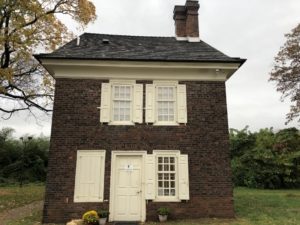
Letitia House was built around the same time as the city’s centennial celebration and is now occupied by a small, but mighty group of people who hope to transform the surrounding areas by strengthening and uplifting the Neighborhoods. The group, Centennial Parkside CDC, works as a Neighborhood Alliance to educate and advocate for changes such as new technology and development standards to keep the neighborhood’s heritage and identity while at the same time conforming to new needs of the 21st Century.
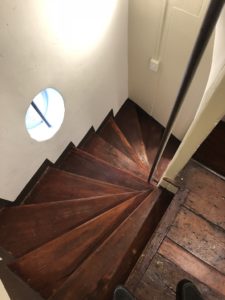
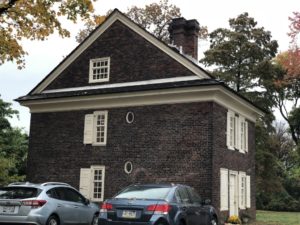
Days 11-13: Quebec City
Connecting Heritage
My time in Quebec really reminded me of San Antonio. After traveling from Montreal, I noticed unlike in Montreal, there were no large skyscrapers in Quebec City and the majority of buildings were about 5 stories tall similar to San Antoino’s downtown and surrounding neighborhoods.
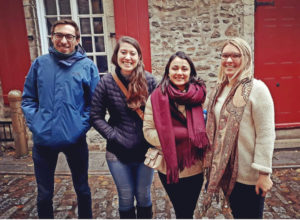
I was fortunate enough to plan a meeting with staff from the Organization of World Heritage Cities (OWHC). The OWHC is an international non-profit that manages a member list of all UNESCO registered World Heritage Cities. The OWHC works separate from UNESCO, but would not be in existence without UNESCO’s registry of World Heritage Cities.
The OWHC groups each World Heritage city into a secretariat: Africa and the Middle East, Asia Pacific, Central America, Caribbean and Mexico, Eastern and Central Europe, EuroAsia, Northwest Europe and North America, South America, Southern Europe and the Mediterranean.
The Young Travelling Scholarship Program was introduced by the Northwest Europe and North American Secretariat – to which each of the cities I’ve visited is a part of.
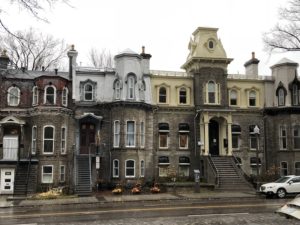
In Quebec City, I walked the Street of Vieux Quebec or Old Town, had high tea at Fairmont Le Chateau Frontenac to which I will defer to Google Images to provide a much better photo than any I could take and ate atop the Ciel! Bistro Bar where I was able to gather a rotating view of the City.
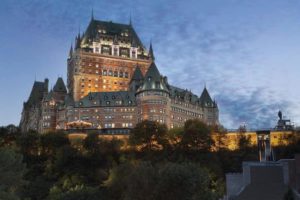
The commonly known, Château Frontenac is a historic hotel situated in Quebec’s Old Town and overlooks the Saint Lawerance River.
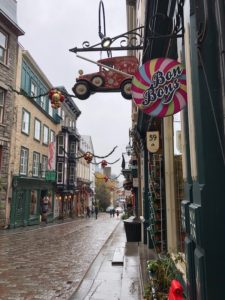
In Old Town is where the OWHC is situated as well as delightful souvenir shops, cafes, and restaurants.
My next stop will be in Philadelphia, Pennsylvania, USA.
Thanks for following along!
Bianca
Day 10: Bonjour!
Connecting Heritage
Today I arrived in Montreal on my way to Quebec City, Quebec, Canada. While I was not in Montreal for very long, of course, I had to stop for one of my favorite things: coffee.
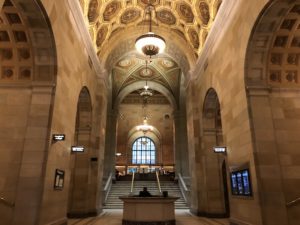
This coffee shop had rave reviews and I can certainly see why. The shop is situated near the old city of Montreal; there are offices on the top floors and below is a nightclub called The Vault, very clever.
Crew Coffee is housed in an old bank which is also a heritage site (!). The building still has it’s original windows and throughout, there are several plaques dedicated to the men who worked at the bank and fought in the Great War.
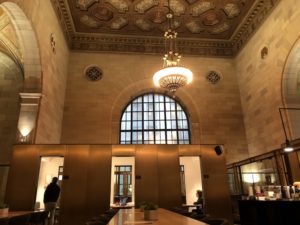
Day 8-9: What is the purpose of your visit?
Connecting Heritage
Warsaw, Poland
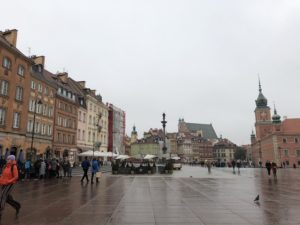
At the heart of Warsaw’s Old Town is Rynek Starego Miasta, a large square lined with cafe’s, souvenir shops and traditional polish eateries. Warsaw’s Old Town is a huge tourist hub complete with cobblestone alley’s and buildings that were reconstructed after WWII.
Warsaw was completely destroyed in 1944 as a revolt to the German occupation during the Second World War. During the time, 85% of the Capital City was destroyed (compared to the untouched Krakow) during WWII. With the majority of jews coming from Poland, the German troops intended to end centuries-old traditions of Polish statehood and culture.
Alas, light after the war – the Old Town was reconstructed to it’s original urban and architectural form and great care and attention was paid to the reconstruction of the city. Warsaw’s Old Town was inscribed into UNESO’s World Heritage Site list in 1980.
New York City, New York, USA
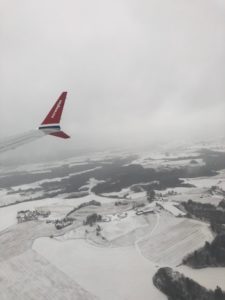
As I made my way back to the states, I traveled through Oslo and was very impressed. I will definitely put Norway onto my list of future travels!
I arrived late in America’s unofficial capital, New York City. Arriving at night, I was completely enamored with the city lights and how easily New York shined.
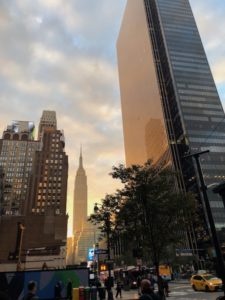
While the last three days have been heavy travel days for me, I will arrive in Canada shortly and explore the Old Town of Quebec City with my longtime best friend from college.
Cheers,
Bianca
Day 7: Fall in Love with Warsaw
Connecting Heritage
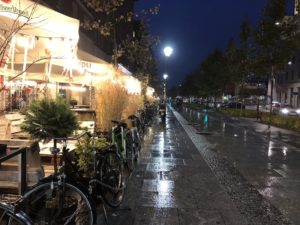
Today definitely felt like Fall. I was stunned by the variety of restaurants downtown Warsaw has to offer. There is everything from Nobu, arguably, the worlds most recognized Japanese restaurant to traditional Polish meals up and down the main street inter-mixed with historic buildings.
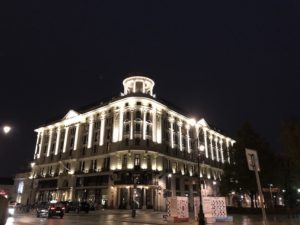
The main street is lined with bookstores, cafes, McDonalds, restaurants, Museums, and Monuments. I would recommend Warsaw.
Days 4-6: Krakow, Poland
Connecting Heritage
Krakow's Old Town
My time in Krakow, Poland has been a favorite thus far. Krakow used to be the Capital of Poland, but on a walking tour, I learned that this is not so because the king set fire to Wawel Royal Castly (in Krakow) and moved to Warsaw during the repairs. When the repairs were ready the king found it geographically easier to stay in Warsaw with it being closer to the border means it was easier to travel to border countries such as Lithuania.
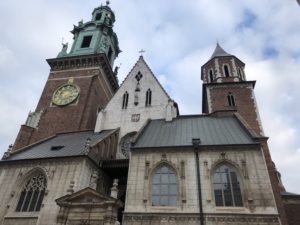
Another interesting fact about this Castle is its juxtaposition of different styles. Reflected in the image above is Renaissance (white limestone) with a mix of Gothic architecture reflected by the darker red bricks. This mix of architecture was because of the different influences of each King in Krakow at the time these pieces were commissioned. The Castle sits atop a hill and is surrounded by water which makes it an excellent fort and nearly impossible to penetrate. During WWII, the German government overtook the castle and used it as a fort because of the aforementioned.
The old town of Krakow used to be surrounded by a large brick wall, but it was torn down around the time it needed to be renovated. Inside Krakow’s Old Town, which is a UNESCO World Heritage Site is the main square.
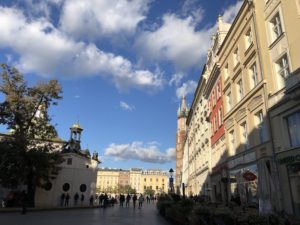
Krakow’s main square is large and much like Vienna’s Schönbrunn Palace, is equally symmetrical. Krakow’s Old Town is surrounded by 3 blocks of buildings set in place at 90 degrees. Each of the buildings is 200 meters from the center of the Old Town.
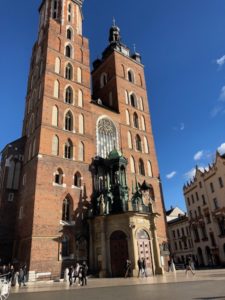
The Church is the only building that does not lie symmetrically with the others and this is so that the altar faces the Eastern direction. This is in line with certain beliefs of the church.
Auschwitz-Birkenau
Apart from exploring the Old Town of Krakow, I visited Auschwitz Concentration Camp which is in the town ofOświęcim, Poland. Oświęcim is about 90 minutes outside of Krakow and the camp is so large that you could easily spend 12-14 hours. There are two camps, Auschwitz I and Auschwitz II-Birkenau. I learned a lot and it was with a heavy heart that I am grateful for the time spent at each camp.
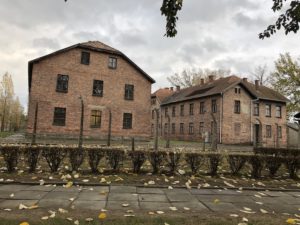
The camp serves as a memorial and museum to all those who lost their lives from 1940-1945 during the German occupation. The camp itself welcomes over 8,000 persons a day and you must be bussed from one camp to the other with Auschwitz II-Birkenau being much, much larger than the first. The wooden buildings at Auschwitz II-Birkenau were originally designed to house 51 horses and instead fit up to 1,000 persons each at one time.
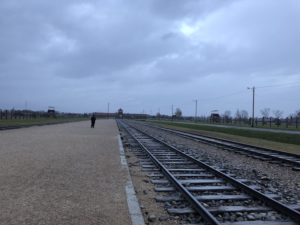
The above is an image of the infamous unloading dock where so many millions were organized and sent directly to the chambers so that SS Soldiers (Nazis) could ensue mass genocide. For me, it was important to visit this place as a reminder to always be kind. It wasn’t that long ago that these war crimes took place.
Auschwitz-Birkenau, the Nazi German concentration and extermination camp, was the largest camp that the Germans established during the Second World War. It is the only death camp on the UNESCO World Heritage List.
Today I traveled to the now capital of Poland, Warsaw.
I hope you’ll join me tomorrow as we connect heritage!
Bianca
Day 3 – Krakow, Poland
Connecting Heritage
Today was a traveling day as I arrived in Krakow from Vienna. I took most of the day to rest after the long travel. Although to take advantage of the beautiful weather, I did manage to visit Krakow’s Old Town.
It was stunning. I was in awe of the how contemporary a place more than thousands of years-old could feel. The buildings were impressive with their colorful facades and the entire square was bustling with people.
It felt like definitely tourists were among me marveling in the scenery, but also like locals came to shop in Krakow’s Old Town as well. There were a number of modern stores mixed in, of course with souvenir shops.
The weather in Krakow surprised me. I was lucky to arrive on such a lovely, sunny day. The main currency used in Krakow is the Polish Zloty and the main language spoken is, of course, Polish.
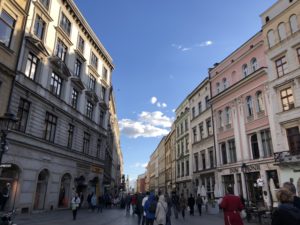
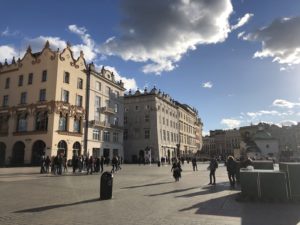
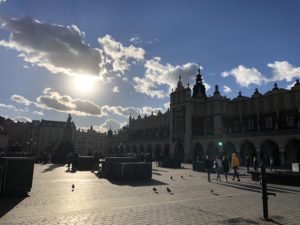
A map, of Poland to orient everyone (and me). This will be useful as I share more history in the coming days.
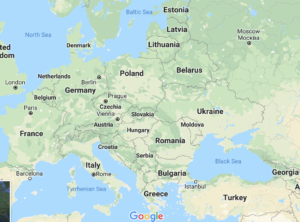
Cheers,
Bianca
Day 2 – May I ask, where are you from?
Connecting Heritage
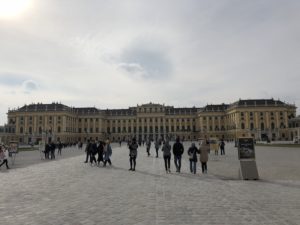
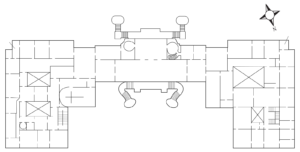
Today, I visited the magnificent Schönbrunn Palace. This place and the buildings that previously took up space here have been around since the 14th Century. The Schönbrunn Palace was home to several King and Emperors who belonged to the German Empire from mid-18th Century to the end of the first World War. Napoleon and his entourage stayed here for a few years when the French occupied Vienna. With all the history, it’s no doubt the Castle and park have been a UNESCO World Heritage Site since 1996.
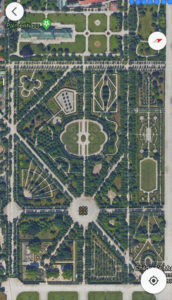
I walked along the Eastern side of the Palace Park but wanted to give a better idea so I snapped a photo of Google Maps (to give an idea of size, this is not the entire park). The park is open to the public, but the fountains didn’t have running water. This will probably not be the case during the warmer seasons. The aerial photo above shows that thoughtful design went into every aspect of this castle, including its park. Its symmetry is outstanding. Here’s an example:
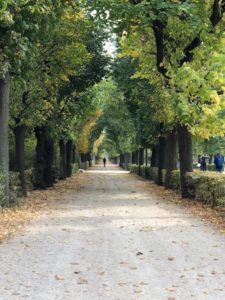
Next, I went into Vienna’s District 1 to climb the 343 stairs of Vienna’s St. Stephen’s Cathedral to relish in a view from the Northern watchtower. Similar to San Antonio’s UNESCO Spanish Colonial Missions, the Cathedral still hosts active masses on the weekends. This means that history is being preserved and attendees get a glimpse of living history and heritage. The cathedral is definitely a top tourist attraction and I would highly recommend. Even just to say you’ve climbed to the top of the highest watchtower to see Vienna from spectacular heights.
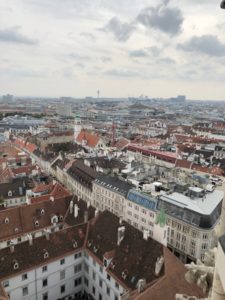
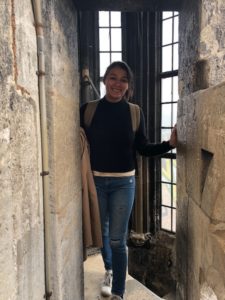
Vienna was spectacular and I was surprised by the alternative culture that surrounded me. There was graffiti around every corner which makes me think that Vienna is still battling similar struggles. I much enjoyed Vienna for the art, alt culture, museums, large number of parks, and public transportation. There are several aims from the City of Vienna to make this place a smart city – one that is sustainable and can house many different immigrants and/or cultures without compromising pieces of history and culture.
The people are very friendly in Vienna and several times today I was asked, “where are you from” and “are you enjoying Vienna”.
Day 1 – Vienna, Austria
Connecting Heritage
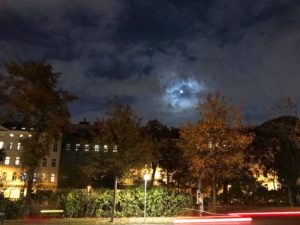
Today, I arrived in Vienna and was not surprised by the architecture that greeted me. In the outskirts of Vienna, where I am staying, there are several little odd one-story antique and discount shops, markets and cafes. The main language spoken in Vienna is German and the currency used is the Euro.
I am staying in District 16-Ottakring, which is on the Western outskirts of Vienna and coincidentally is famous for three of my favorite things:
Ottakringer Beer,
Meinl Coffee Roasting Company, and
the Manner Schnitten Wafers with hazelnut filling in pink wrapping.
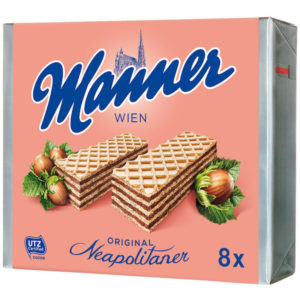
Apart from what Vienna’s 16th District is known for, there are quite a bit of restaurants and markets which mirror the large number of immigrants from Turkey and the Balkans that have taken up occupancy in the 16th District of Vienna.
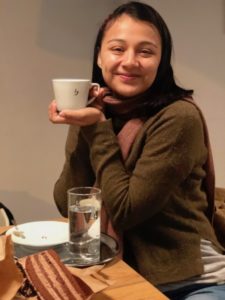
I was able to find myself a Wiener Melange, which is German for “Viennese Blend” and is similar to a cappuccino.
If you’re interested in learning more about Vienna’s 16th District: Ottakring, try visiting, http://www.tourmycountry.com/austria/sixteenth-district-vienna.htm.
Please check back tomorrow as I will be visiting the Schönbrunn Palace, the National Library and others.
Cheers,
Bianca
